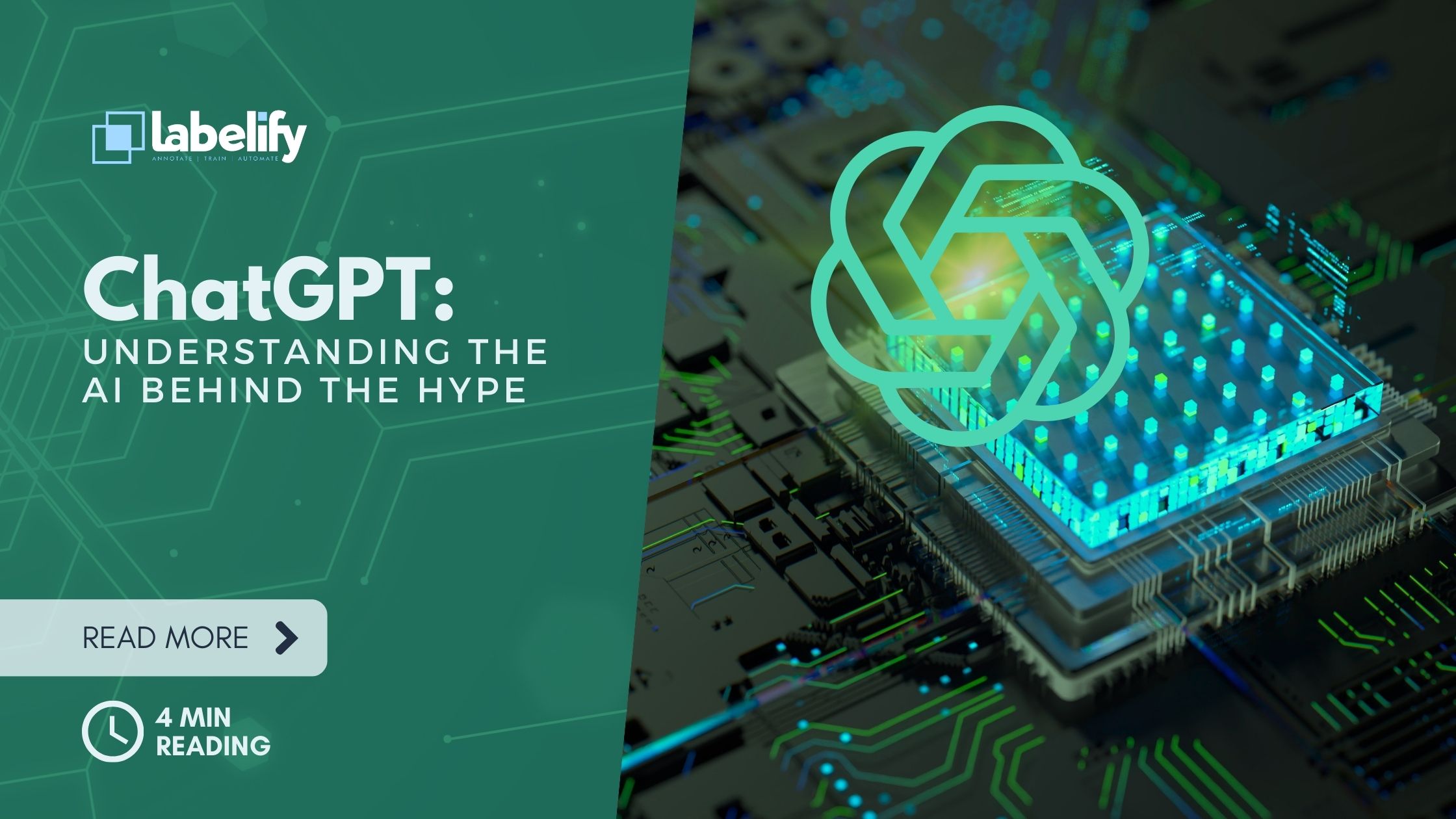We have witnessed the extraordinary evolution of ChatGPT, surpassing all expectations. Released in 2020, GPT-3 amazed us with its vast knowledge and coherent language generation. But it was ChatGPT that truly unleashed its power.
Researchers argue that ChatGPT's remarkable abilities were already present in GPT-3 but remained hidden. Training GPT-3 on code resulted in the revolutionary Codex model, while fine-tuning with instruction datasets and Reinforcement Learning with Human Feedback aligned it with human values.
Join us as we explore the awe-inspiring capabilities of ChatGPT and its profound impact on language tasks.
Conclusiones clave
- GPT-3 and its subsequent versions like ChatGPT have evolved to become powerful language models with extensive knowledge, coherent language generation, and reasoning abilities.
- Training GPT-3 on a combination of text and code improved its understanding, generation, and reasoning abilities related to code.
- Fine-tuning language models using instruction datasets has significantly improved their ability to follow human instructions and solve tasks effectively.
- The application of Reinforcement Learning with Human Feedback (RLHF) has further enhanced ChatGPT's abilities, including aligning with human values, generating verbose responses, and maintaining context in actual dialogue.
The Evolution of GPT-3: From Facts to Reasoning
How did GPT-3 evolve from being knowledgeable about facts to excelling at reasoning?
The evolution of common sense in GPT-3 can be attributed to the impact of fine-tuning. Researchers argue that the abilities seen in ChatGPT were already present in the original model but remained hidden due to a lack of fine-tuning. Yao Fu's work supports this notion.
Fine-tuning on instruction datasets played a crucial role in enhancing GPT-3's ability to follow human instructions and solve tasks effectively. Additionally, the introduction of Reinforcement Learning with Human Feedback (RLHF) further improved the model's ability to align with human values and engage in coherent and context-aware dialogue.
Through these advancements, GPT-3 has surpassed expectations, offering liberation to an audience seeking innovative and visionary language models.
Training GPT-3 on Code: Unleashing Its Programming Abilities
Training GPT-3 on code has unlocked its programming abilities, allowing us to harness the power of this language model in the world of software development. By incorporating code in the training data, GPT-3's understanding, generation, and reasoning abilities for code have significantly improved. This breakthrough has led to an increasing adoption of GPT-3 in the developer community.
To illustrate the impact of training GPT-3 on code, let's take a look at the following table:
| Benefits of Training GPT-3 on Code |
|---|
| Improved code understanding |
| Enhanced code generation |
| Strengthened code reasoning |
| Increased adoption in the developer community |
| Empowering developers to build innovative software |
With these advancements, GPT-3 has become an invaluable tool for developers. Its programming abilities have transformed the way software is developed, accelerating the creation of innovative solutions. As more developers adopt GPT-3, it has the potential to liberate them from mundane tasks and free up their time for more creative and impactful work.
Fine-Tuning on Instruction Datasets: Enhancing Human Instruction Following
To enhance our ability to follow human instructions, we fine-tuned the language model using instruction datasets. By incorporating these datasets into our training process, we've significantly improved the model's language understanding and task performance.
The instruction datasets consist of input templates paired with correct output statements generated by human annotators. This fine-tuning process has enabled our model to effectively solve various tasks, even without being explicitly trained on the specific prompt.
We've also gained experience in quickly building large-volume instruction datasets, thanks to our platform's scalability. As a result, our fine-tuned models have surpassed expectations, demonstrating their capability to follow human instructions and provide useful responses.
This enhancement in language understanding and task performance has unlocked new possibilities for interaction and problem-solving, empowering users to achieve their goals with greater ease and efficiency.
Reinforcement Learning With Human Feedback: Improving Dialogue and Contextual Understanding
We have further enhanced the dialogue and contextual understanding of our ChatGPT model through the implementation of Reinforcement Learning with Human Feedback (RLHF). This technique involves training an additional reward model to guide the learning process. Through RLHF, ChatGPT has made significant improvements in its dialogue modeling capabilities.
- Dialogue Modeling Improvements:
- ChatGPT now engages in more natural and coherent conversations, allowing for a more immersive user experience.
- It maintains contextual understanding by generating responses that are consistent with the ongoing conversation.
- The model has learned to ask clarifying questions when faced with ambiguous queries, ensuring accurate and relevant responses.
- Reinforcement Learning in Language Models:
- RLHF has allowed us to align ChatGPT with human values, enabling the model to reject inappropriate or harmful requests.
- By incorporating RLHF, ChatGPT generates more verbose and informative responses, providing users with detailed and comprehensive answers.
- The model has also learned to balance between being informative and respectful, ensuring a positive and respectful interaction for users.
Through the power of RLHF, ChatGPT has become a more capable and engaging conversational AI, revolutionizing the way we interact with language models.
Advancements in Coherence and Verbose Text Generation
Through fine-tuning and reinforcement learning, ChatGPT has achieved significant advancements in generating coherent and detailed text, exceeding expectations. These advancements have focused on enhancing natural language understanding and improving conversational engagement.
ChatGPT is now capable of understanding and responding to user queries with greater accuracy and relevance. It can generate more detailed and contextually appropriate responses, creating a more immersive and satisfying user experience.
By leveraging the power of fine-tuning and reinforcement learning, ChatGPT has surpassed previous limitations in coherence and verbosity, enabling users to interact with it in a more liberated and productive manner.
These advancements mark a significant step forward in the development of AI-powered conversational agents, providing users with a tool that can truly understand and engage in meaningful dialogue.
Real-World Applications: From Wedding Speeches to Medical Advice
As we delve into the realm of real-world applications, ChatGPT's capabilities have proven invaluable, extending from crafting eloquent wedding speeches to providing insightful medical advice. It's remarkable how this AI technology has revolutionized various fields, empowering individuals to create personalized and heartfelt speeches that leave lasting impressions.
Furthermore, when it comes to medical advice, ChatGPT's ability to analyze symptoms and provide relevant suggestions has been nothing short of exceptional.
- Ethical considerations:
- Ensuring user privacy and data protection.
- Mitigating biases and potential harm in medical advice.
- Transparency in AI decision-making processes.
- User experience and feedback:
- Continuous improvement based on user feedback.
- Enhancing the conversational flow and coherence.
- Incorporating user preferences for a more personalized experience.
With these real-world applications, ChatGPT not only showcases its versatility but also highlights the importance of ethical considerations and user-centric design. It's a powerful tool that liberates individuals, enabling them to navigate important life moments and make informed decisions with confidence.
Preguntas frecuentes
How Does Fine-Tuning on Instruction Datasets Enhance the Ability of Language Models to Follow Human Instructions?
Fine-tuning on instruction datasets enhances language models' ability to follow human instructions by providing benefits and addressing challenges. It improves the models' coherence and verbosity, allowing them to generate more useful responses.
However, building instruction datasets requires time, creativity, and language skills. Despite these challenges, fine-tuned models can effectively solve tasks without specific prompt training.
What Is the Role of Reinforcement Learning With Human Feedback (Rlhf) in Improving the Dialogue and Contextual Understanding of Language Models Like Chatgpt?
Reinforcement learning techniques have revolutionized chatbot development, elevating the dialogue and contextual understanding of language models like ChatGPT. By incorporating human feedback, these models align with our values and generate more engaging responses.
This approach not only enhances the user experience but also ensures the generation of coherent and verbose text. Through reinforcement learning with human feedback, ChatGPT has surpassed expectations, showcasing its potential to transform how we interact with AI-powered chatbots.
How Has Gpt-3's Training on Code Improved Its Programming Abilities?
Code training has greatly improved GPT-3's programming abilities. By training on a combination of text and a large corpus of code, GPT-3, and its later version ChatGPT, have gained a deeper understanding of programming concepts.
This includes improved comprehension of code syntax, generation of code snippets, and reasoning about code-related tasks. Code training has empowered these models to assist developers in tasks such as code generation, debugging, and even providing programming advice.
The potential unleashed by code training is truly remarkable.
What Are Some Advancements in Coherence and Verbose Text Generation Achieved by Chatgpt?
Advancements in fluency and verbose text generation have been achieved by ChatGPT through fine-tuning and RLHF. It can now generate coherent and detailed responses, surpassing expectations. These advancements revolutionize the way we interact with AI, empowering us to perform tasks like writing speeches, summarizing articles, and debugging code.
Moreover, ChatGPT aligns with human values, rejects inappropriate questions, and maintains context in actual dialogue. The ethical implications of these advancements are significant, as they enable us to harness the power of AI in a liberating and responsible manner.
Can You Provide Examples of Real-World Applications Where Chatgpt Has Been Used, Such as Writing Wedding Speeches or Providing Medical Advice?
In real-world applications, ChatGPT has been used for various tasks. It can generate coherent and verbose text, making it capable of writing wedding speeches, summarizing scientific articles, and even debugging code.
Developers and companies are leveraging ChatGPT's abilities to provide medical advice and assist with legal matters. Its power and versatility have surpassed expectations, making it both capable and enjoyable to interact with.
Conclusión
In conclusion, the evolution of ChatGPT has truly exceeded our expectations, showcasing its remarkable abilities in various language tasks. From its inception as GPT-3 to the subsequent development and fine-tuning, ChatGPT has unleashed its power in generating coherent and knowledgeable responses.
Its proficiency in understanding and generating code has revolutionized programming abilities, while the incorporation of instruction datasets and reinforcement learning has enhanced its human instruction-following and contextual understanding.
With its advancements in coherence and verbose text generation, ChatGPT has become a visionary tool with immense real-world applications.




